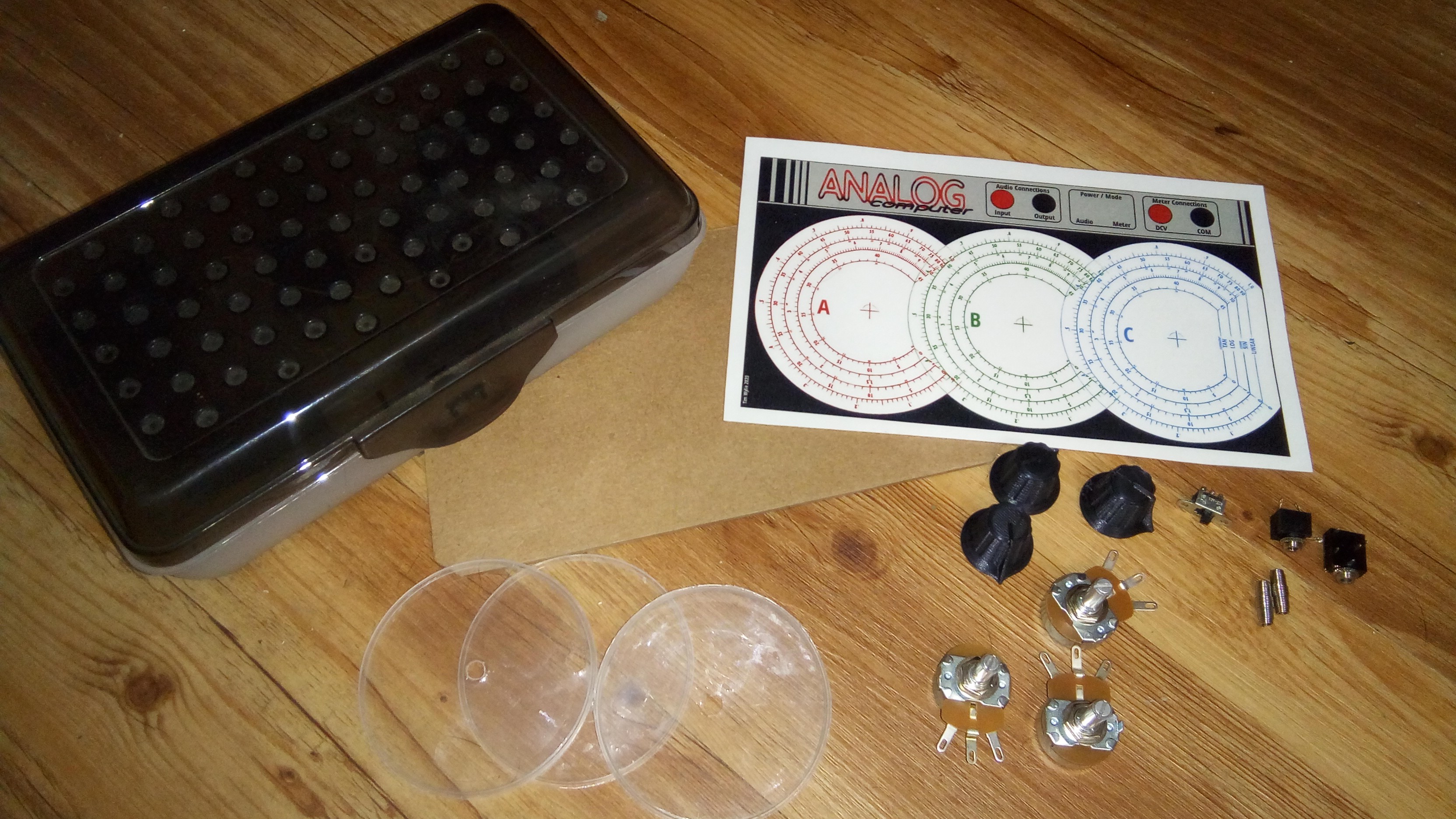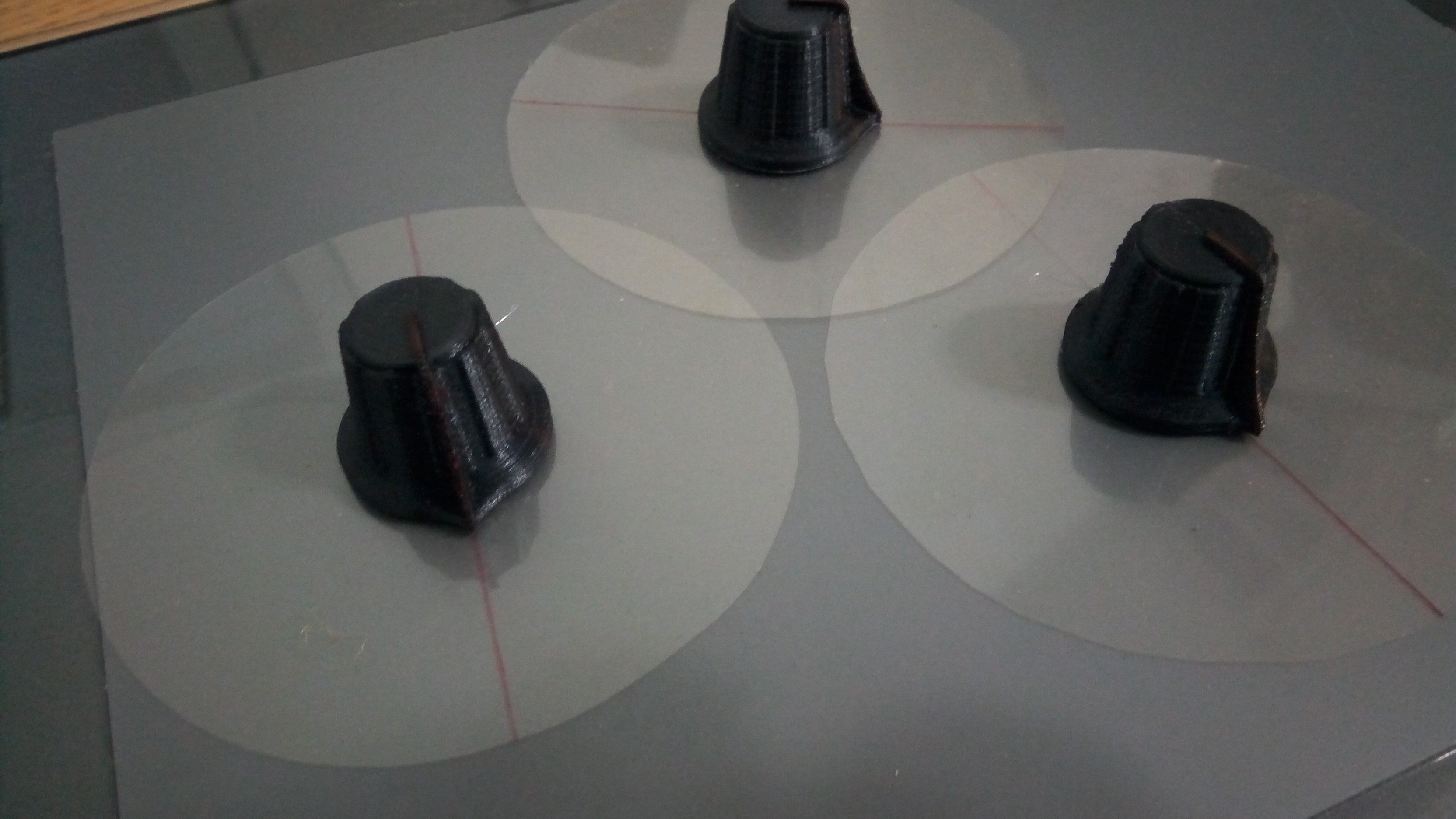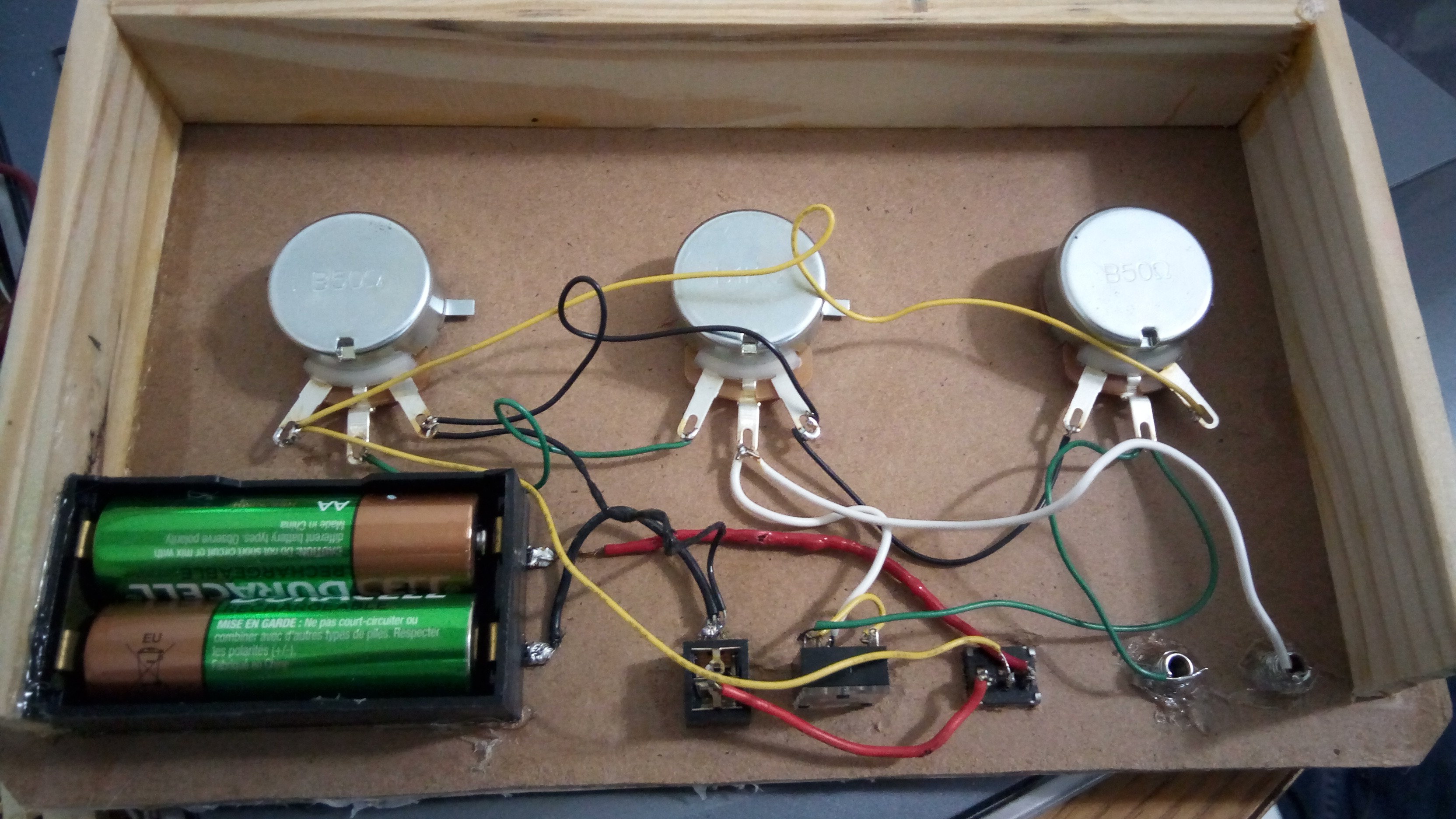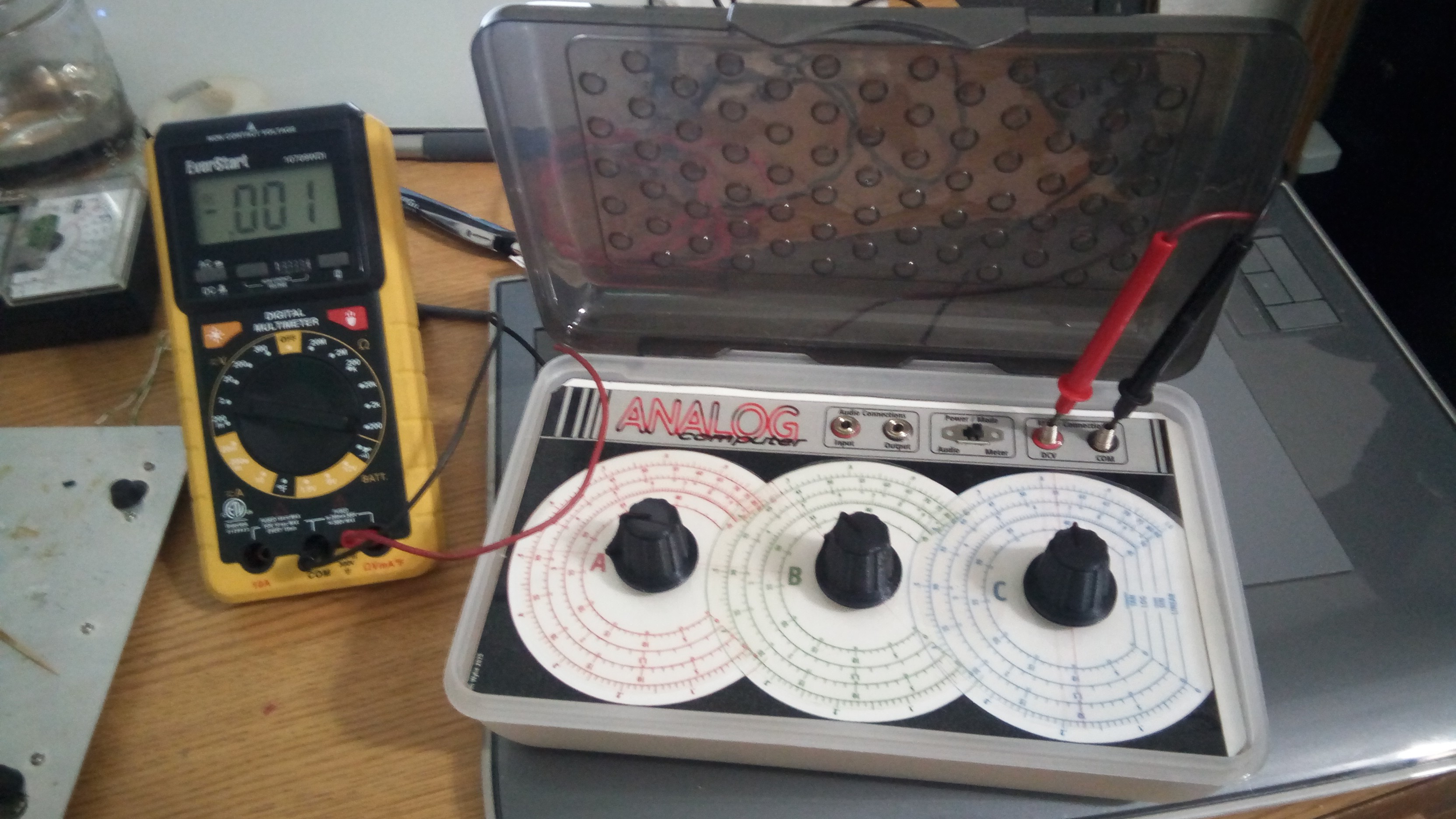
The pieces used to build the analog computer.
- 3 knobs that are 3d printed (https://www.thingiverse.com/thing:3460654)
- 3 potentiometers (Two 50 Ohm, One 1K Ohm)
- 2 springs
- 2 headphone jacks
- 1 SPDT switch
- 3 pringles lids or circles cut from clear plastic
- battery holder that is 3d printed (https://www.thingiverse.com/thing:3115171)
- a pencilbox :)
For space, I overlapped the 3 potentiometer gauges. Rather than 3d print needles, which might hit each other, I glued the plastic circles to the knobs and drew a line on it for the needle.

The face of the computer with the gauges was laminated and glued to wood. I thin added side walls to mount in the pencilbox. I also 3d printed a battery holder for AA batteries. Again this is wired for either the voltage or the audio input. The finished bottom looks like this.

And that's it! There's a lot to be said about the actual potentiometers used. The tolerance should be less than 5% in order to get fairly accurate results. Using 20% tolerance means that between the 3 pots, your error could be too large to be useful.
 I included in the files the gauge section without any numbers as well. This allows you to mark the gauges specific to your pots so that they're more accurate.
I included in the files the gauge section without any numbers as well. This allows you to mark the gauges specific to your pots so that they're more accurate. deftcoyote
deftcoyote
Discussions
Become a Hackaday.io Member
Create an account to leave a comment. Already have an account? Log In.